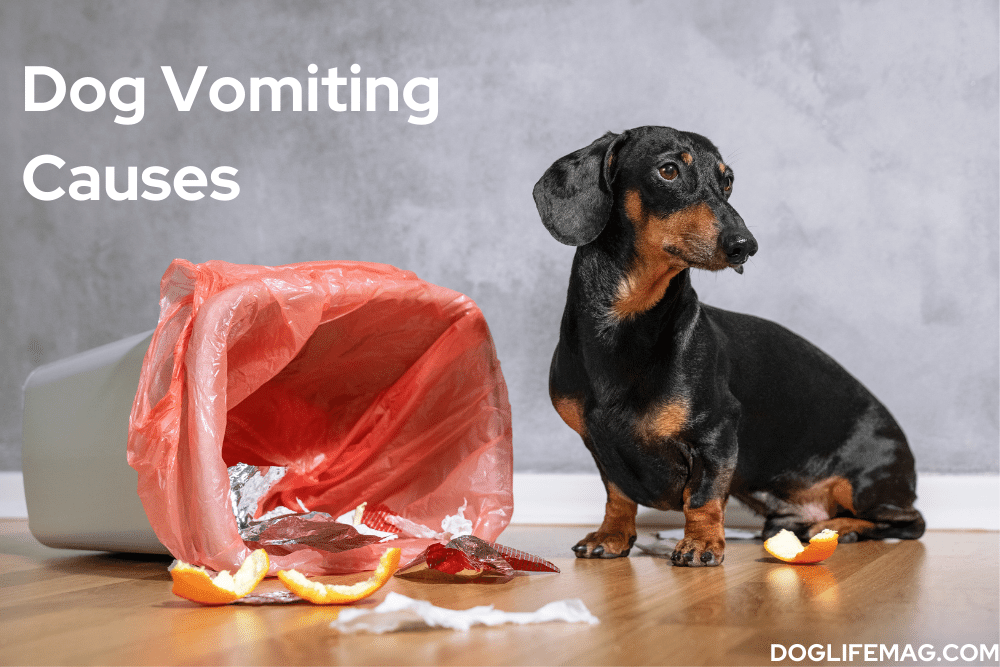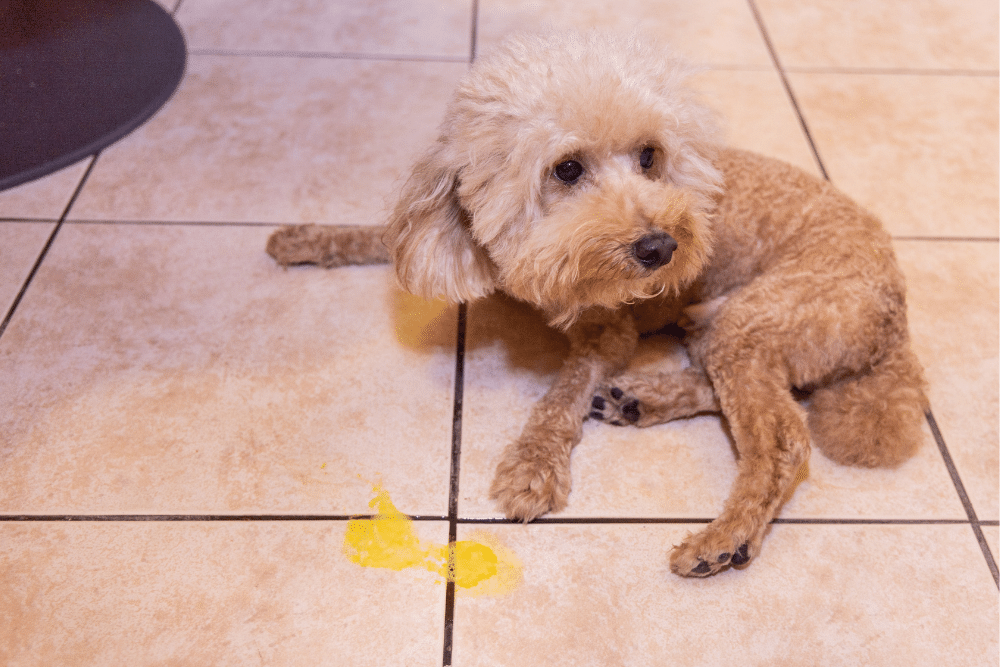Chunky, liquid, foamy, bloody, yellow, white, projectile. This Halloween crime scene is brought to you by none other than your faithful, tail-wagging, muddy pawed, always-down-for-a-snack, couch potato pooch. You know the warning siren of a dog vomiting – the guttural retchings that can wake you out of a dead sleep. But the scene you’re left with is just the starting point of your investigation.
Just like the liquid constitutional contributions from the opposite end of your dog, dog vomit can mean different things.
It also comes in a variety of styles – different textures, different colors, different content.
One thing you can be sure of, though: Those on four legs make no effort to reach the porcelain throne before letting it go. So, while there will be no hair-holding, there will definitely be some floor-cleaning.
Before you sop up Buddy’s vomit, snap a photo to help you (and potentially your vet) know how to treat his GI upset.
First of all, it’s important to know the difference between vomiting and regurgitation. Yes, they are different, and they can signal different things going on with your dog.
Vomiting vs. Regurgitation
Vomiting
Vomiting (aka emesis) is the forceful ejection of partially digested food from the lower stomach and sometimes upper small intestine.
It is often accompanied by bile and a sour smell. (After all, it has been down there a while.)
Because it is an active, forceful process, it involves the audible and visual theatrics we associate with an “Oh no, here it comes!” moment. Retching (dry heaves), thoracic contractions, body crouching….
Regurgitation
Regurgitation, on the other hand, involves undigested food and occurs soon after eating. “Dinner in, dinner out, dinner still recognizable.”
Regurgitation is more “passive” than vomiting. Ingested food may not even make it all the way to the stomach before coming back up.
Let’s explore the various kinds of vomitus (that’s Harry Potter medical-speak for barf) and what they mean.
Why is my dog vomiting? should be your investigation-leading question when mysterious liquids come out of his mouth. And that means puke-sleuthing and forensic documentation.

Dog Vomiting: Characteristics
Here are some of the characteristics (and their causes) you may notice in your dog’s vomit, from color to texture to quantity:
- Green:
As a one-off, green dog vomit isn’t usually a concern. It could indicate bile or a lunch of grass.
However, if it continues, or if your dog seems unhealthy or not feeling well, see your vet.
- Yellow:
As with green vomit, yellow vomit is most often bile, which is normally found in the small intestine to help with the breakdown of fats. And, as a one-off, it’s usually nothing to be concerned about.
When you see just liquid/foamy bile, it means that food has already passed through the stomach and early intestine.
- Clear:
Clear liquid could be indicative of stomach liquids or even consumed water that can’t stay down due to nausea.
- Small amounts of white foam or no vomit, despite efforts to vomit:
If your dog makes repeated attempts to vomit, only to produce a little white foam or nothing, get him to the hospital immediately.
This is a common sign of GDV (gastric dilatation and volvulus), commonly known as bloat. GDV is a painful, potentially life-threatening condition.Seek emergency help immediately, as the condition progresses quickly.
- Bright green or teal-colored:
This is a serious red flag indicating ingestion of mouse or rat poison. Seek emergency veterinary help immediately!
- Blood:
Blood in vomit always warrants veterinary attention.
As with diarrhea, the brighter red and more fresh the blood, the closer the problem area is to the output site.
- Black:
The color of vomit often reflects the color of what your dog ate, depending on how much digestion has taken place.
Black vomit, though rare, may be the result of Buddy’s interest in eating dirt and mud.
But look closely with a light and make sure that “black” is actually “black” and not a dark red.
If vomit is actually a dark red, there may be an ulcer, tumor, or ingested toxin to blame. Time to call the vet.
- Granular:
Vomit may look granular simply from food being pretty digested already.
However, granules with the appearance of coffee grounds are actually indicative of digested blood in the stomach.

Dog Vomiting: Causes
Knowing how to read your dog’s vomit is one thing. But what brings on dog vomiting or puppy vomiting in the first place? Here are some of the most common culprits:
- Eating or drinking too quickly
- Changing diet too quickly
- Ingested foreign object
- Blockage in GI tract
- Toxicity
- Nausea
- Infectious disease (e.g. Parvo in unvaccinated puppies)
- Medications
- Meal frequency (e.g. BVS [bilious vomiting syndrome] in older dogs)
When you’re the guardian of another living being, whether human or animal, anything “wrong” can be alarming.
And every parent knows the way vomit and diarrhea can change the course of a whole day (at least). You become nurse, housekeeper, and detective on the spot.
While it’s not uncommon for a dog to have a few vomiting episodes throughout the year, any episode could signal something serious.
Some occurrences warrant clean-up and a close watch. Some warrant a little more sleuthing and documentation and a call to your vet. Your vet may suggest putting them on a sick dog food recipe for a while.
And some give you no time to wait before getting emergency help.
As with anything regarding your dog’s health, always trust your gut (no pun intended). It’s always better to be safe than sorry, even if that means being known by voice recognition at your veterinary clinic.
And remember that photos and videos can be a huge help in expediting an accurate diagnosis and treatment.








